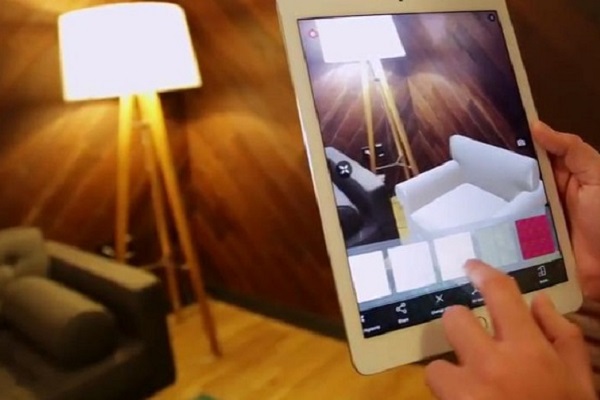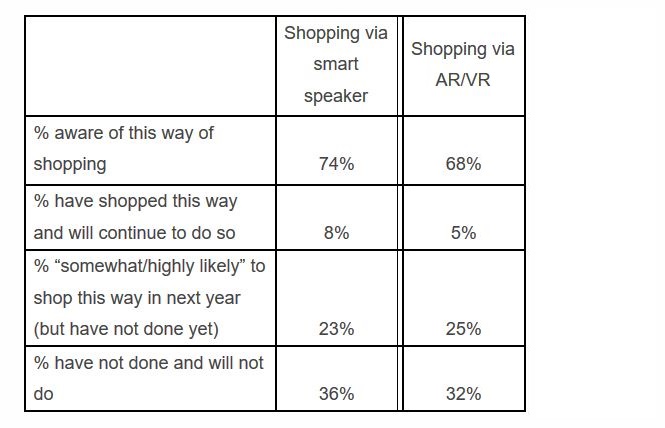Report: Shopping by Voice and AR / VR Shows Only Moderate Consumer Adoption

Data from a new survey by market research firm GfK shows growing consumer interest in shopping by voice and employing augmented and virtual reality (AR and VR) technologies. Both are assumed to be “the next big thing” in online shopping with different prognosticators favoring one or the other. However, from a consumer standpoint, the data suggests these technologies are still in the ‘early adopter phase’ of maturity with shopping via smart speakers slightly more common today and enthusiasm for future shopping slightly higher for AR/VR.
Voice is the Real Story
Although the press release from GfK portrays AR and VR shopping as eliciting more enthusiasm than voice, the actual numbers tell a different story.

GfK reports that 74% of consumers are aware of voice shopping and 8% have tried it and will continue to do so. That conversion from awareness to trial and intended future use is 10.8%. For AR/VR awareness was a bit lower at 68% with only 5% using these technologies for shopping and planning to continue in the future. That is only a 7.4% conversion rate.
The bigger story may be the enthusiasm of consumers about these technologies with 23% saying they are “somewhat/highly likely” to shop using a smart speaker in the next year and 25% using AR/VR. That 2% difference is miniscule, and likely within the margin of error for the survey.
There’s also an important difference in the array of options available for shopping by AR and VR versus shopping by voice. AR is ubiquitous in theory since everyone with a smartphone has can use the camera for AR, but there aren’t a large number of options from retailers and consumer goods makers that offer it as a channel for shopping. Smart speakers, while not nearly as common with about one-third the ownership rate, offer a wide range of shopping options through the in-built voice assistants, with more added every month.
More Smart Speakers, More Shoppers
There’s reason to believe that the number of people shopping by voice will rise quickly going by other reports. Market data aggregator eMarketer recently predicted that 31 million Americans will shop by smart speaker this year, an upward revision from the 22.7 million predicted at the end of last year.
The first step to shopping with a smart speaker is having a smart speaker available. Voicebot’s research found smart speaker ownership in the U.S. rising 40.2 percent last year to an installed base of 66.4 million. There’s a correlation between having a smart speaker available and using it to buy things. Voicebot’s own survey reported that 26.1% of smart speakers owners have tried at least once to buy something by voice as of January 2019. That represented about 6.8% of U.S. adults at the time of the survey with 3.9% saying they had become monthly voice shoppers. The GfK figures suggest that the number of voice shoppers has grown in the first half of the year as eMarketer forecasted and consumer responses indicate the figure is likely to grow further in the coming months.
GfK’s survey emphasizes that voice commerce is very much in its early stages, and there’s a lot more groundwork to be done before companies can rely on retail by voice as a purchasing channel. Who will lay the foundation for that channel, and what it will eventually look like, however, will be hotly contested by the sellers and the voice platforms they operate on.
Follow @voicebotai Follow @erichschwartz








